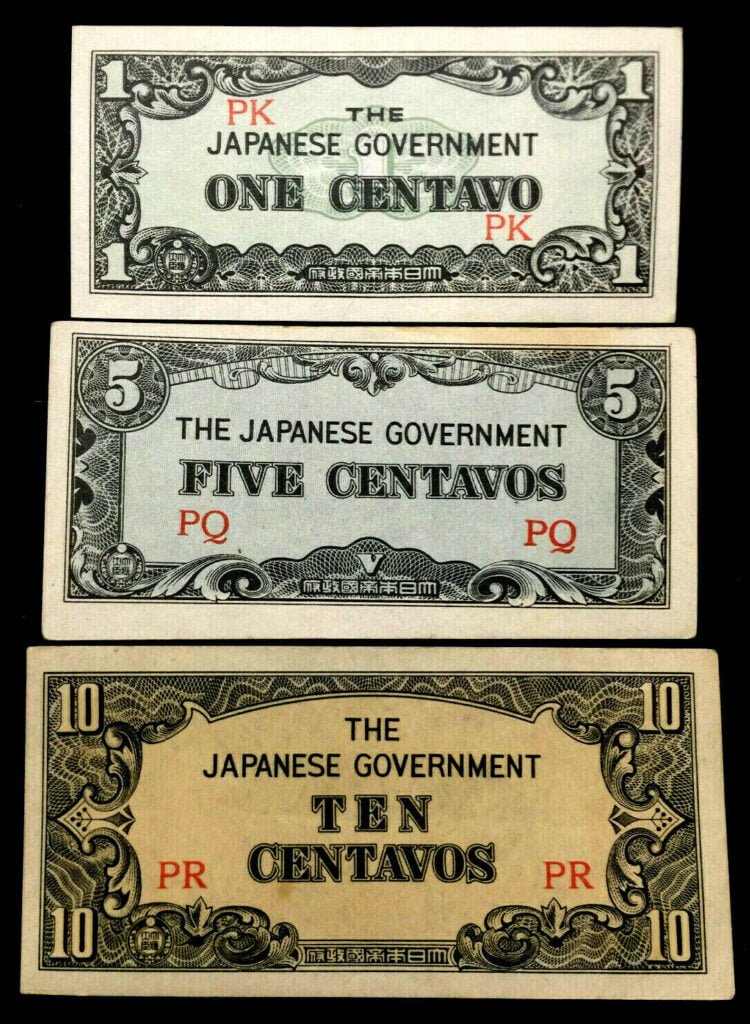Japanese Government Ten Centavos Bill, Philippines Invasion, World War II
The Japanese occupation of the Philippines during World War II left an indelible mark on the nation’s history. Amidst the tumultuous events that unfolded, the Japanese Government Ten Centavos Bill emerged as a significant artifact. This article delves into the historical background, design features, and cultural significance of this currency issued during the Japanese occupation. Additionally, we explore the numismatic value of these bills and provide answers to frequently asked questions surrounding their rarity, authenticity, and trade regulations.
Historical Background
The Philippines Invasion
The invasion of the Philippines by the Japanese Empire began on December 8, 1941, shortly after the attack on Pearl Harbor. The aim was to secure strategic resources and extend Japanese influence in the Pacific. The Philippines, then a U.S. territory, became a crucial battleground during World War II.
Currency under Japanese Occupation
As part of their occupation strategy, the Japanese authorities introduced a new currency system in the Philippines. The Japanese Government Ten Centavos Bill was one of the denominations issued during this period. These bills were intended to replace the previous Philippine currency and establish control over the monetary system.
Features of the Japanese Government Ten Centavos Bill
Design and Appearance
The Japanese Government Ten Centavos Bill boasted a unique blend of Japanese and Filipino design elements. The obverse side featured an intricate illustration of Mount Fuji, a symbol of Japan’s national identity. Japanese characters denoting the denomination were prominently displayed. On the reverse side, Filipino text translated to “Japanese Government Ten Centavos Bill” appeared along with additional ornamental motifs.
Security Features
To safeguard against counterfeiting, the bills incorporated several security features. Watermarks, security threads, and intricate patterns were implemented to ensure authenticity and maintain the integrity of the currency. These security measures aimed to prevent illicit replication and maintain the trust of the populace.
Significance and Collectibility
Historical Significance
The Japanese Government Ten Centavos Bill holds immense historical significance as a tangible artifact from the Japanese occupation of the Philippines. It serves as a reminder of the economic and political control exerted by the Japanese authorities during that time. The currency system, including these bills, played a crucial role in shaping the everyday lives of Filipinos under occupation.
Cultural Significance Beyond Its Historical Value
The Japanese Government Ten Centavos Bill holds cultural significance. It reflects the intersection of two distinct cultures—the Japanese occupiers and the Filipino populace. The bill’s design elements, merging Japanese motifs with Filipino text, represent the blend of influences during the occupation.
Numismatic Value For Numismatists and Collectors
The Japanese Government Ten Centavos Bill is highly sought after. Its rarity, historical context, and unique design contribute to its collectibility. Factors such as the bill’s condition, scarcity, and accompanying historical documentation influence its value in the numismatic market.
Conclusion
The Japanese Government Ten Centavos Bill from 1942-1945 represents a unique and significant artifact from the Japanese occupation of the Philippines during World War II. Its historical importance, combined with its cultural and numismatic value, makes it a cherished item among collectors and history enthusiasts. By preserving and studying these bills, we gain insights into the economic and social aspects of a dark chapter in Philippine history. These bills serve as a tangible connection to the past, reminding us of the resilience and endurance of the Filipino people during challenging times.
FAQs (Frequently Asked Questions)
Q1: How rare are the Japanese Government Ten Centavos Bills from the 1942-1945 period?
A1: Japanese Government Ten Centavos Bills from this period are relatively scarce due to the limited timeframe of Japanese occupation and subsequent withdrawal.
Q2: Can these bills be legally owned and traded?
A2: Yes, owning and trading these bills is legal in most countries. However, it is essential to ensure compliance with local regulations and restrictions related to the trade of historical artifacts.
Q3: How can I determine the authenticity of a Japanese Government Ten Centavos Bill?
A3: Consult an expert or experienced numismatist to assess the bill’s authenticity and condition. They will examine security features, paper quality, and other details to verify its legitimacy.
Q4: Where can I find Japanese Government Ten Centavos Bills for sale?
A4: These bills can be found in various numismatic marketplaces, online auctions, and specialized currency dealers. Conduct thorough research and purchase from reputable sellers to ensure authenticity and fair pricing.
